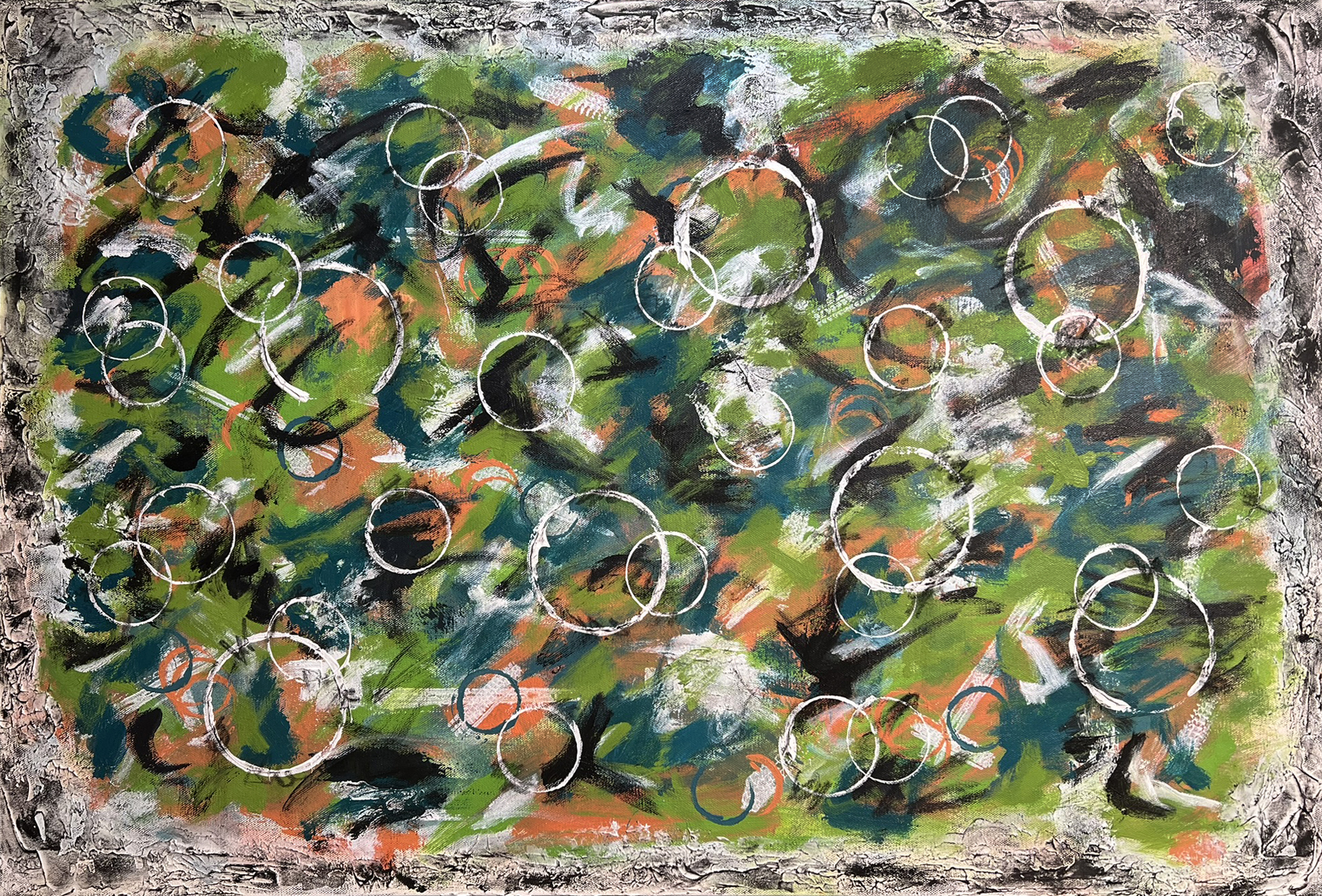
What Does It Really Mean to “Leave a Part of Yourself on the Canvas?”
When I started painting in 2020, I didn’t have a concrete answer to the question, “Why did you start painting?” My answer typically was, “I thought it would be fun,” or, “I’ve always been interested in trying painting,” or some other less analyzed and refined answer.
I did not know at the time why I was drawn to putting acrylic paint on a cotton canvas, but now I do. I painted because I did not know what else to do with the feelings of grief and pain I was experiencing at the time. Then, as those feelings began to fade in the background, my “why” became a deep desire to express my inner self in a way that would grant me more understanding about who I was, what I wanted, and what I felt.
Now, four years later, I am still trying to figure out if I’m doing it “right.”
Is there a “right” way to paint? Well, then, that begs the question, “Is there a wrong way to paint?”
And, of course, the real question is, “Why the hell don’t I just paint and stop asking why?”
Good question!
And I don’t have a great answer. But here is what I do know.
I don’t know anything.
That is why I paint.
I paint to discover who I am, what I feel, and, most importantly, for my super-duper analytical mind, why I feel what I feel and think what I think.
Painting is my therapy and my roadmap to my mind. It will never replace my much-loved and appreciated human therapist, but instead, augment that relationship and possibly take me places in my brain talk therapy cannot.
Each painting brings questions, emotions, strife, joy, and, if I’m being honest, which I really like to be, confusion.
You may scoff at the confusion part but don’t. Just take a look at most of my abstract paintings in the last few months (looky here!), and you will see the chaos.
But not all chaos is bad chaos. My chaos is highly revered, at least by me. It’s the storm before the calm, the messy before the neat, the tortured before the peace. It’s a journey I must take if I really want to know who, what, and why I am.
Somedays, I hate this journey, and other days, it brings me to grateful tears.
I’ve read about and heard art teachers, other artists, and those who follow and love them that painting requires the artist to “leave a part of themselves on the canvas.” I am sure that is the case for many artists, but for myself, I would refine that to be “I discover a bit of myself in every canvas.”
Does a part get left behind in that discovery process? Perhaps, but I am far too stingy with my “self” at this stage to be okay with giving any of “me” to others to keep. I feel I don’t have enough for myself, so why would I share?
Well, it’s out of my hands. The process of self-discovery is also the process of “leaving a part of myself” on the canvas, whether I like it or not.
So, when you look at one of my paintings or any other artists’ works, you are glimpsing a part of their mind, their being, their essence. It’s deeply personal and feels extremely vulnerable.
So, I chose to say I am “discovering myself” rather than “leaving a piece of myself” because it feels safer.
But you know the truth.
Still Trying to Hide is the largest canvas I have painted since I started. 36×24 seems large, but I was so ready for it. I rolled into the large square footage with ease. Now I long for even larger canvases.
I painted, paused, painted, and paused, waiting for the direction I was looking for to pop into my head. I wanted this painting to drive me from an emotional place, not an analytical one. I succeeded, and I failed, but in the end, I am happy with what I gained from the process and what I left (reluctantly) on the canvas.
I am especially thrilled with the symphony of mediums and techniques I used (modeling paste, both flow and heavy acrylics, stencils, charcoal, rags, cups, biscuit cutters, and many sizes of brushes).
This one has movement and emotion. I see joy and pain. And also happiness and regret. And because life is not binary, there are probably other emotions in there as well.
Some have said I seem tortured by the painting process, and I would not disagree entirely. It may appear outwardly as torture, but inwardly, it feels more like a dark path that must be taken to discover the brighter, less angsty, and tortuous meadow that waits for me further down the path.
I must go through the dark to find the light.
Victoria
